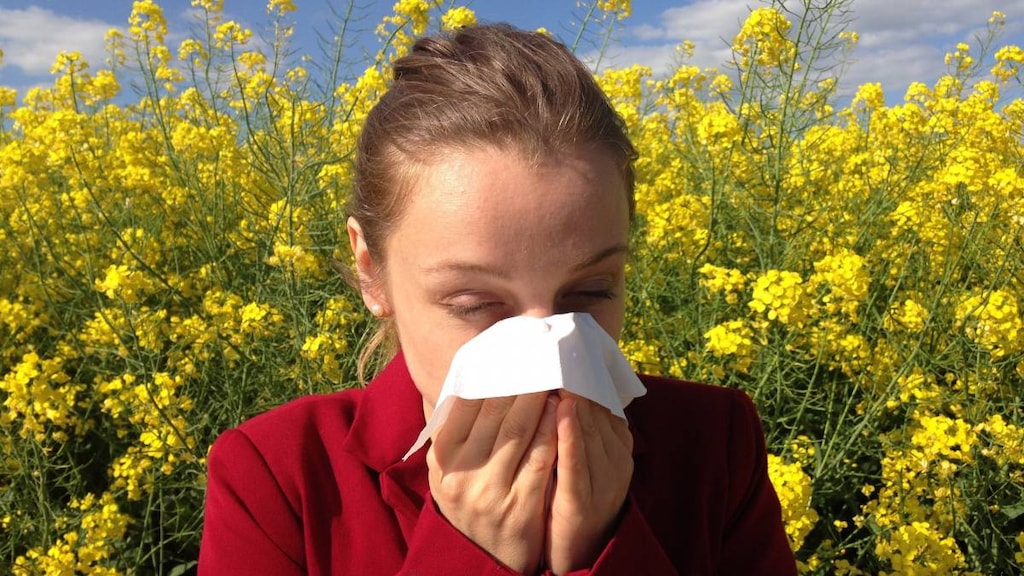Dosage Forms
Excipient information presented when available (limited, particularly for generics); consult specific product labeling.
Solution, Nasal, as hydrochloride:
Astepro: 0.15% (30 mL) [contains benzalkonium chloride, edetate disodium]
Generic: 137 mcg/spray (30 mL); 0.1% (30 mL); 0.15% (30 mL)
Pharmacology
Mechanism of Action
Competes with histamine for H1-receptor sites on effector cells and inhibits the release of histamine and other mediators involved in the allergic response; when used intranasally, reduces hyper-reactivity of the airways; increases the motility of bronchial epithelial cilia, improving mucociliary transport
Pharmacokinetics/Pharmacodynamics
Distribution
Vd: 14.5 L/kg
Metabolism
Hepatic via CYP; active metabolite, desmethylazelastine
Excretion
Feces (~75%, <10% as unchanged drug)
Clearance: 0.5 L/hour/kg
Onset of Action
30 minutes (Wallace 2008); maximum effect: 3 hours
Time to Peak
2 to 3 hours (Azelastine [generic] 0.1% solution); 3 to 4 hours (Astepro)
Duration of Action
12 hours
Half-Life Elimination
Azelastine: 22 hours (0.1% solution), 25 hours (0.15% solution); Desmethylazelastine: 52 hours (0.1% solution), 57 hours (0.15% solution)
Protein Binding
Azelastine: ~88%; Desmethylazelastine: ~97%
Use: Labeled Indications
Perennial allergic rhinitis (Astepro 0.1% and 0.15% solution only): Relief of symptoms of perennial allergic rhinitis in adults and pediatric patients ≥6 months.
Seasonal allergic rhinitis: Relief of symptoms of seasonal allergic rhinitis in adults and pediatric patients ≥2 years (Astepro 0.1% and 0.15% solution) and ≥5 years (azelastine [generic] 0.1% solution).
Vasomotor rhinitis (azelastine [generic] 0.1% solution): Relief of symptoms of vasomotor rhinitis in adults and adolescents ≥12 years.
Contraindications
There are no contraindications listed in the manufacturer's labeling.
Dosage and Administration
Dosing: Adult
Perennial allergic rhinitis: Intranasal: Astepro (0.15% solution): Two sprays in each nostril twice daily.
Seasonal allergic rhinitis: Intranasal:
Astepro (0.1% or 0.15% solution): One or two sprays (0.1% solution) in each nostril twice daily or two sprays (0.15% solution) in each nostril once daily
Azelastine [generic] 0.1% solution: One or two sprays in each nostril twice daily
Vasomotor rhinitis: Intranasal: Azelastine [generic] 0.1% solution: Two sprays in each nostril twice daily.
Dosing: Geriatric
Refer to adult dosing.
Dosing: Pediatric
Perennial allergic rhinitis: Intranasal:
Infants ≥6 months and Children <6 years: 0.1% solution: 1 spray per nostril twice daily.
Children 6 to <12 years: 0.1% or 0.15% solution: 1 spray per nostril twice daily
Children ≥12 years and Adolescents: 0.15% solution: 2 sprays per nostril twice daily
Seasonal allergic rhinitis: Intranasal:
Children 2 to <6 years: 0.1% solution: 1 spray per nostril twice daily
Children 6 to <12 years: 0.1% or 0.15% solution: 1 spray per nostril twice daily
Children ≥12 years and Adolescents:
0.1% solution: 1 or 2 sprays per nostril twice daily
0.15% solution: 1 or 2 sprays per nostril twice daily or 2 sprays per nostril once daily
Vasomotor rhinitis: Intranasal: Children ≥12 years and Adolescents: 0.1% solution: 2 sprays per nostril twice daily
Administration
Intranasal: Before initial use of the nasal spray, the delivery system should be primed with 4 sprays (azelastine [generic] 0.1% solution) or 6 sprays (Astepro), or until a fine mist appears. If 3 or more days have elapsed since last use, the delivery system should be reprimed with 2 sprays or until a fine mist appears. Blow nose to clear nostrils. Keep head tilted downward when spraying. Insert applicator into nostril, keeping bottle upright, and close off the other nostril. Aim the spray tip toward the back of nose. Breathe in through nose. While inhaling, press pump to release spray. Alternate sprays between nostrils. After each use, wipe the spray tip with a clean tissue or cloth. Avoid spraying in eyes or mouth. Do not tilt head back after use. Astepro 30 mL bottles contain 200 sprays; discard bottle after 200 sprays, even if not completely empty.
Storage
Store upright at 20°C to 25°C (68°F to 77°F); protect from freezing.
Drug Interactions
Alcohol (Ethyl): May enhance the CNS depressant effect of Azelastine (Nasal). Avoid combination
CNS Depressants: May enhance the CNS depressant effect of Azelastine (Nasal). Avoid combination
Adverse Reactions
Adverse reactions may be dose-, indication-, or product-dependent:
>10%:
Central nervous system: Bitter taste (4% to 20%), headache (1% to 15%), drowsiness (≤12%)
Infection: Cold symptoms (children ≤17%)
Respiratory: Rhinitis (exacerbation; ≤17%), cough (children: 11%; infants and children: ≥2%)
2% to 10%:
Central nervous system: Dysesthesia (8%), dizziness (2%), fatigue (2%)
Dermatologic: Contact dermatitis
Endocrine & metabolic: Weight gain (2%)
Gastrointestinal: Dysgeusia (children: 2% to 4%), nausea (3%), xerostomia (3%), vomiting
Infection: Upper respiratory tract infection (children: ≥2% to 3%)
Neuromuscular & skeletal: Myalgia (≤2%)
Ophthalmic: Conjunctivitis (<2% to 5%)
Otic: Otitis media (infants & children: ≥2%)
Respiratory: Epistaxis (2% to 7%), asthma (5%), sinusitis (3% to >5%), burning sensation of the nose (4%), pharyngitis (4%), nasal discomfort (≤4%), sneezing (1% to 3%), sore nose (infants and children: ≥2%), nasal mucosa ulcer (≤2%), pharyngolaryngeal pain
Miscellaneous: Fever
<2%:
Cardiovascular: Flushing, hypertension, tachycardia
Central nervous system: Abnormality in thinking, anxiety, depersonalization, depression, hypoesthesia, malaise, nervousness, sleep disorder, vertigo
Dermatologic: Eczema, folliculitis, furunculosis
Endocrine & metabolic: Albuminuria, amenorrhea
Gastrointestinal: Abdominal pain, ageusia, aphthous stomatitis, constipation, diarrhea, gastroenteritis, glossitis, increased appetite, toothache
Genitourinary: Hematuria, mastalgia
Hepatic: Increased serum ALT
Hypersensitivity: Hypersensitivity reaction
Infection: Herpes simplex infection, viral infection
Neuromuscular & skeletal: Back pain, dislocation of temporomandibular joint, hyperkinesia, limb pain, rheumatoid arthritis
Ophthalmic: Eye pain, watery eyes
Renal: Polyuria
Respiratory: Bronchitis, bronchospasm, laryngitis, nasal congestion, paranasal sinus hypersecretion, paroxysmal nocturnal dyspnea, postnasal drip, sore throat
Miscellaneous: Laceration
<1%, postmarketing, and/or case reports: Altered sense of smell, anaphylactoid reaction, anosmia, application site irritation, atrial fibrillation, blurred vision, chest pain, confusion, drug tolerance, dyspnea, facial edema, increased serum transaminases, insomnia, muscle spasm, nasal sores, palpitations, paresthesia, pruritus, skin rash, urinary retention, visual disturbance, xerophthalmia
Warnings/Precautions
Concerns related to adverse effects:
- CNS depression: May cause CNS depression, which may impair physical or mental abilities; patients must be cautioned about performing tasks that require mental alertness (eg, operating machinery or driving).
Concurrent drug therapy issues:
- Drug-drug interactions: Potentially significant interactions may exist, requiring dose or frequency adjustment, additional monitoring, and/or selection of alternative therapy. Consult drug interactions database for more detailed information.
Pregnancy
Pregnancy Considerations
Azelastine is systemically absorbed following nasal inhalation and may have side effects similar to other antihistamines. However, data related to the use of azelastine in pregnancy is limited; if treatment for rhinitis in a pregnant woman is needed, other agents are preferred (Wallace 2008).
Patient Education
What is this drug used for?
- It is used to ease allergy signs.
- It is used to treat a runny nose.
Frequently reported side effects of this drug
- Nosebleed
- Fatigue
- Headache
- Cough
- Stuffy nose
- Sore throat
- Loss of strength and energy
- Nausea
- Dry mouth
- Dizziness
- Weight gain
- Sneezing
- Change in taste
Other side effects of this drug: Talk with your doctor right away if you have any of these signs of:
- Eye irritation
- Signs of a significant reaction like wheezing; chest tightness; fever; itching; bad cough; blue skin color; seizures; or swelling of face, lips, tongue, or throat.
Note: This is not a comprehensive list of all side effects. Talk to your doctor if you have questions.
Consumer Information Use and Disclaimer: This information should not be used to decide whether or not to take this medicine or any other medicine. Only the healthcare provider has the knowledge and training to decide which medicines are right for a specific patient. This information does not endorse any medicine as safe, effective, or approved for treating any patient or health condition. This is only a brief summary of general information about this medicine. It does NOT include all information about the possible uses, directions, warnings, precautions, interactions, adverse effects, or risks that may apply to this medicine. This information is not specific medical advice and does not replace information you receive from the healthcare provider. You must talk with the healthcare provider for complete information about the risks and benefits of using this medicine.




